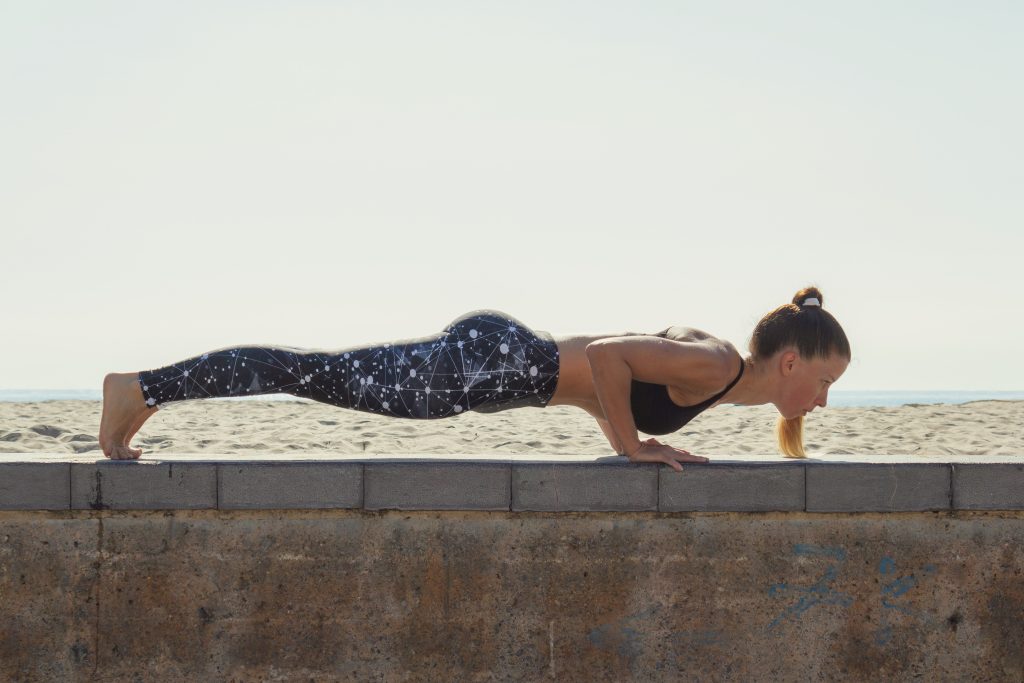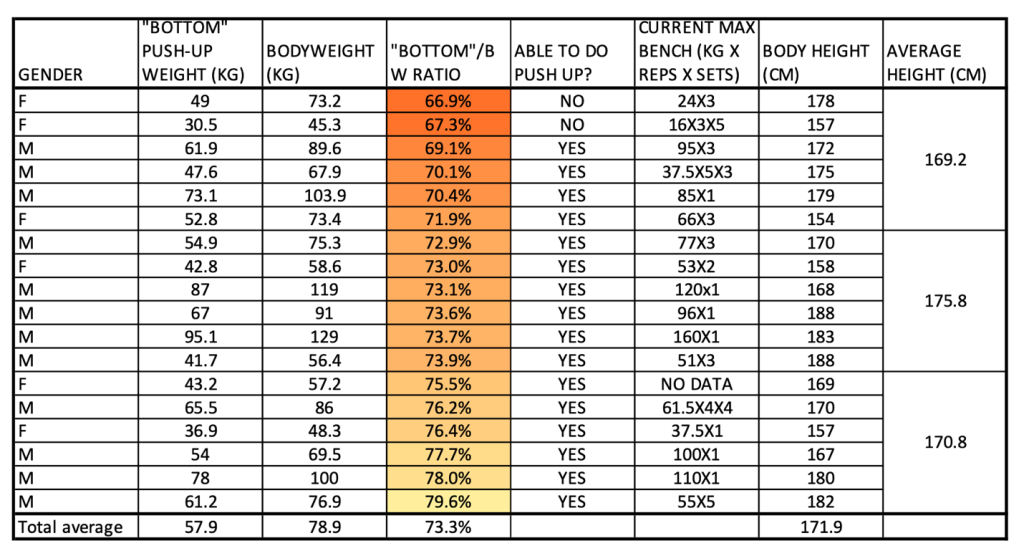
Our new client, Kate, told me that one of her goals is to be able to do a push-up. Currently, she can descend to around 10cm above the ground but unable to press herself back up. So just for fun, we tried to find out how much she needs to bench to be able to do a push-up.
We can draw a few parallels between a push-up and a bench press. It generally uses the same muscle group as its prime movers (chest, triceps, and shoulder), and the range of motion can also be similar with similar grip/hand width.
Obviously, I’m not implying that both are EXACTLY the same. So, there are bound to be some flaws in comparing them head to head. However, to keep it simple, let’s assume:
1. We have similar grip width in the bench press and the hand position in push-up to ensure a similar moment arm between the shoulders and the hands.
2. We can hold rigid extension on their knees and hips while ensuring our torso and legs are flat throughout the push-up.
3. We are not arching excessively during bench press to reduce ROM.
Now, with all this being said, I have tried two methods to estimate the amount of bench press to be able to do a solid push-up.
Mathematical model using moment analysis
I am using myself as the subject of this experiment, and these are some measurements that my wife took.
Heels-to-shoulder: 134cm
Heels-to-base of palm (at the bottom of the push up): 122cm
Heels-to-navel: 101 cm
Shoulder-to-the-base-of-palm: 59cm
Bodyweight: 69.5kg
Total height (heels-to-head): below average
Based on a quick Google search (which I always trust), humans’ center of mass (COM) is typically around 10 cm below the navel, at the top of the hip bone. So since the heels-to-navel measurement is 101cm, I will “very accurately” assume that my heels-to-COM is at 91cm.
Now, let’s analyze this at the top position of the push-up (which is not very useful, but I’ll explain why)

We will do the same analysis at the bottom of the push-up

Well, actually, I didn’t need to calculate the force at the top. LOL.
In conclusion, mathematically, I need to generate more than 74.5% of my body weight to push myself back up to the top position.
However, I am just one person; it might not represent how much force you need to generate or, in this case, how much you need to bench for you to do a push-up. So, I set up the second experiment.
Weighing Scale Method
One fine Saturday at Hygieia Strength & Conditioning, I troubled 18 clients in the gym to do me a favour. Test subject consists of 6 females and 12 males ranging from 27 to 73 years old. They performed the push-up with their hands on the weighing scale. I recorded the reading at the bottom of the push-up, their actual bodyweight (with shoes and sometimes belt on), their height, and how much they can bench.
These are the results:

The results give us the average weight at the “bottom” of the push-up to be 73.3% of their body weight.
To draw a few conclusions:
1. All people who can bench more than the weight at the “bottom” can do push-ups
2. People who can’t do a push-up yet, have a bench press lower than the “bottom” weight.
So if you can bench heavier than the “bottom” weight, I think it’s likely that you can do a push-up.
I also observed a few trends (or a lack thereof):
1. The people who can do push-ups but have lower bench press numbers versus] the “bottom” weight tend to be novice lifters. They are probably still progressing or not very efficient yet at doing the bench press.
2. I can’t see any trend in a person’s height vs. “bottom”/BW ratio. Although if we do this experiment again, we can also try to measure the heels-to-navel height. The measurement might reveal if there’s a significant difference in the ratio between people with longer torso proportion and people with longer leg proportion due to the mass distribution.
3. Gender might not play much role in determining the “bottom”/BW ratio.
Try it out! And let us know your results. I hope you had fun reading it.

